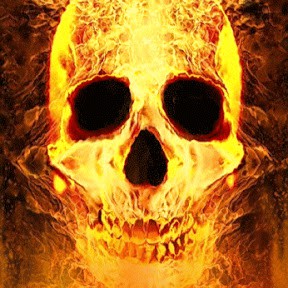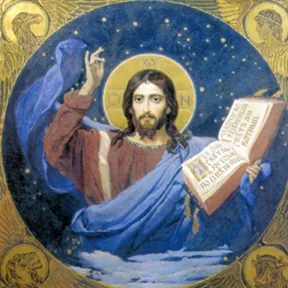Moses and the Exodus | Part 2
Toward the end of his 40-year sojourn in Midian, Moses was shepherding Jethro's flock near Mount Horeb when he was amazed to see a thornbush flaming with fire but not consumed.
Science & Archaeology Confirm the Biblical account of Exodus.
1. 17:10 The Apuer Payrus: Egyptian document that mentions the Plagues.
2. 18:52 Nine Plagues Scientifically explained.
3. 36:06 How many people were there in the Exodus ? Ex 12:37
4. 39:19 Santorini: Pillar of smoke and fire ?
5. 51:48 Another intriguing Egyptian reference to the Exodus.
Toward the end of his 40-year sojourn in Midian, Moses was shepherding Jethro's flock near Mount Horeb when he was amazed to see a thornbush flaming with fire but not consumed.
As he approached to inspect this great phenomenon, A voice spoke out of the flame, revealing that it was now time for God to deliver Israel out of bondage and commissioning Moses to go in His memorial name Yahweh. (Ex 3:1-15) Thus God appointed Moses as His prophet and representative, and Moses could now correctly be called an anointed one, or messiah, or "the Christ" as at Hebrews 11:26. Yahweh, through the angel, provided credentials that Moses could present to the older men of Israel. These were in the form of three miracles as signs. Here, for the first time in the Scriptures, we read of a human empowered to perform miracles. - Ex 4:1-9.
The Burning Bush: Could there actually be a plant that burns but is not consumed ? In fact, there is one, a shrub called fraxinella ("the little ash tree"), more popularly known as "the gas plant" or just "the burning bush." It can be found in any well-stocked botanical garden, probably under its Latin name of Dictamnus albus.
The several subspecies of fraxinella are sparsely distributed all across the Eurasian landmass, from China and the near east to the Balkans and as far west as the Rhineland. Dictamnus prefers chalky soil and a warm, dry climate. Its sturdy white (hence, albus ) rootstock sends up numerous stiff, vertical stalks bearing tough, dark green leaves that are shaped something like the leaves of an ash tree. The rose-colored blossoms -- which look, appropriately enough, like miniature candles -- appear in early summer.
The entire plant is honeycombed with tiny oil sacs that secrete large quantities of volatile oils in hot weather. Direct rays of the sun may ignite the oil, which then burns off so quickly that the plant itself does not catch fire; in other words, it is not consumed. Visitors to Israel may have the opportunity to see any large number of burning bushes in the desert if the sun is hot enough.
Moses's staff, not a magic wand.
As a Symbol of Authority: One's staff was considered a valuable personal possession, and some staffs were doubtless identifiable as belonging to the individual. Judah gave Tamar his staff and his signet ring as security until he should send her a kid of the goats in payment for his relations with her. (Ge 38:18, 25) Chieftains carried a rod as a symbol of authority. Therefore the Bible often uses the rod to symbolize the authority one has or the authority vested in him by another. Moses' rod became a symbol of his authority and commission from God when he appeared before the older men of Israel, also when he appeared before Pharaoh and the priests of Egypt. (Ex 4:17, 29-31; 7:9-12)
In the latter case the rod is said to be Aaron's, but it was evidently Moses' rod used by Aaron as Moses' spokesman, as a comparison of Exodus 7:15, 17 indicates.
After this, Moses' rod was used many times as a symbol that he was appointed and backed up by Yahweh with authority as the nation's leader. (Ex 8:5; 9:23; 10:13; Nu 20:11) When the authority of Moses and Aaron was challenged, out of all the rods for the leaders of the 12 tribes, it was the rod of Aaron, representing the house of Levi, that God caused to bud and produce ripe almonds. This thoroughly proved that Aaron, hence, also his house, was designated by God to hold the office and authority of the priesthood. This rod was thereafter kept for some time in the ark of the covenant. - Nu 17:1-11; Ex 29:9; Heb 9:4.
The staff Moses carried had no power in and of itself. Therefore the gestures and use of the staff were symbolic in that it was used to communicate to the observer that what was to follow was directly related to the actions and words of bearer and not a coincidence.
..Moses turned the brackish lake at the oasis of Marah into a reservoir of fresh drinking water, ..
...and the Lord shewed him a tree, which when he had cast into the waters, the waters were made sweet..." Exodus 15:25
Bedouin sheperds of this region still use the branches of the barberry bush to make alkaline water sweet, or at least drinkable.
















































